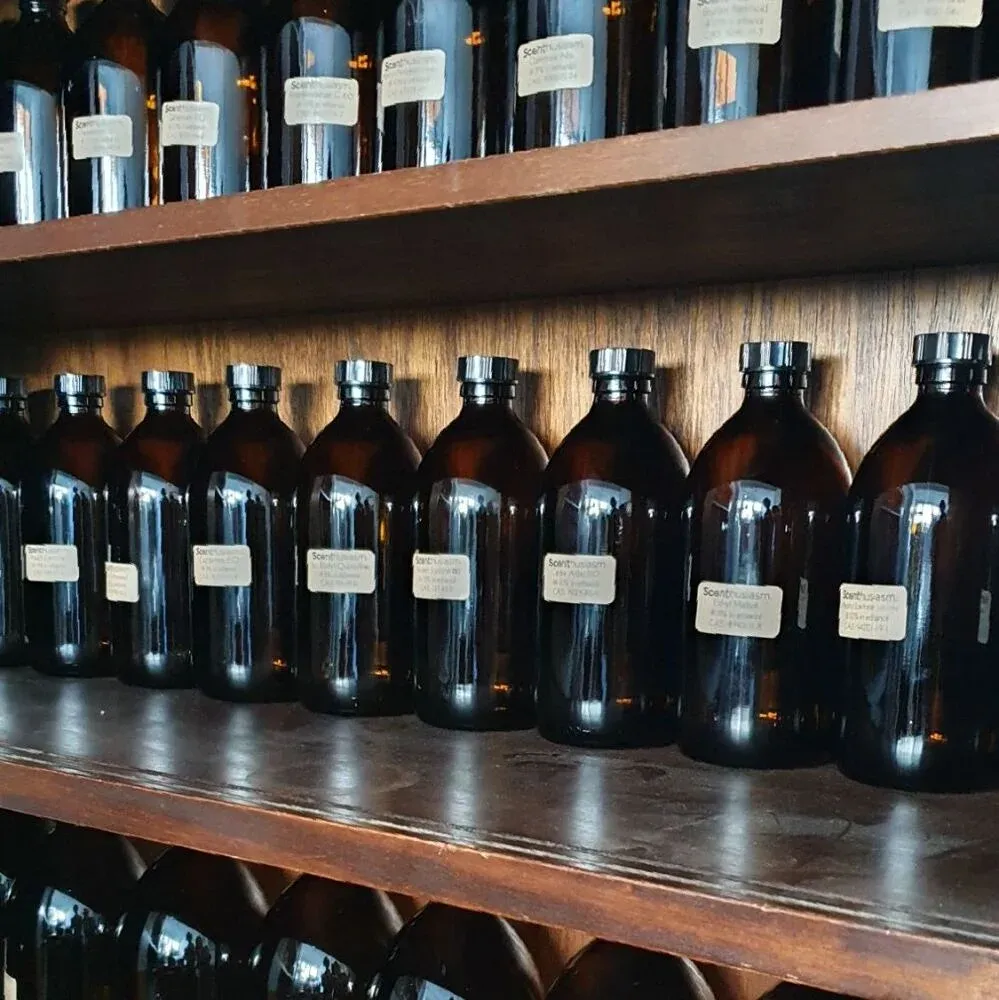Absolutely Marvellous: Creating a soliflore fragrance

Here we’re sharing another piece (including a little experiment) that Sarah originally created for her Patreon members.
It seems that no matter where you enter perfumery, as a die-hard fan of naturals or someone who builds fragrances mostly from aromachemicals, you’ll eventually discover a beautiful way of balancing both. That was certainly the case for Sarah.
The piece includes a task usually reserved for Scenthusiam members, but if you have a collection of perfumery materials, you can give it a try. Even if you don’t, it’s still fascinating to see how a soliflore fragrance can be created from a single absolute, supported by Clouds.
Absolutely Marvellous
Talking to many people at the beginning of their perfumery practice, I've found that there's a scale of where we start. This is a generalisation and you might have dropped in anywhere along this scale, but here goes:
At one end there are those who start with a collection of aromachemicals with the aim of building accords from scratch. At the other end are those who buy the most expensive naturals they can afford with the aim of making the most fabulously exclusive creations. It depends on the influences we had which brought us to the point at which we started to make perfume.
If, on the other hand, you first discovered the GC-MS analysis route into explaining what's in perfumes, one which breaks down every fragrance into its components, you might have the impression that what you need is a large collection of aromachemicals and no naturals at all.
Before starting to make perfume I had spent 14 years at Lush, where they used aromachemicals but kept it quiet and never named them. As I didn't work in their perfumery department - I was their head writer - I relied on the product teams to tell me what they used to make their fragrances, and they only named that naturals. I graduated from that experience with the impression that most perfumes are made with naturals, with added synthetics to bring the best out of them. That's still my preferred route to creating a fragrance, even though occasionally they end up 100% synthetic or 100% natural.
Some absolutes smell exactly the way you would expect from the name: jasmine, coffee, lavender, tobacco and seaweed for starters. Others, not so much: narcissus, violet leaf, tuberose and osmanthus do not smell much like their flowers as the viscous liquid released by the process does not contain the same proportions of aromatic materials as the air surrounding the plants. Even rose is a bit odd.
Absolutes Task 1
My favourite way to use absolutes is as the heart of a fragrance, used in small doses to add richness and beauty, not necessarily to dominate. Here I'm recommending that you try something completely different.
Here's the first exercise for the month, based on my hypothesis that we can make a beautiful soliflore fragrance from one absolute, plus Clouds.
Absolutes do tend to be expensive, also pretty strong, so dilute one of yours to 5% in ethanol. You can make a small amount, say 0.4g topped up to 8g with ethanol, which will fit into a 10ml bottle.
Leave it time to dissolve properly. Some of them are awkward and take a while.
First, experiment on watercolour paper or filter paper.
Take one drop of your absolute dilution
Add one or more drops of a Cloud material, for example, Hedione, Iso E Super, a musk, Ambrox, Cedramber
Smell the result
Repeat with another Cloud material
Repeat with combinations of Cloud Materials
Repeat with two absolutes at the same time
With your favourite combination, scale up the drops to grams
I would recommend a ratio of around 1:4 absolute: cloud, checking safety levels
Wear it
As Calkin & Jellinek say, always take the shortest route. Allowing for expense and safety, this is one of the shortest. It does feel a bit audacious allowing an absolute to do most of the work, but considering that each one is composed of hundreds of aromachemicals already, why not? Nature did it so we don't have to.
P.S. I completely understand the reluctance to add aromachemicals to expensive absolutes, as one who also came to perfumery on the naturals end of the scale. The people who started at the aromachemicals end don't feel it at all! It’s best to give it a try with your spare samples, because it can be life changing when we smell the effect that aromachemicals have, breathing life back into dense dormant naturals.
If this little insight into Sarah’s perfumery world has made you want more you can find out all about her patreon community here.

Comments